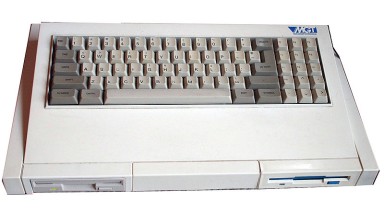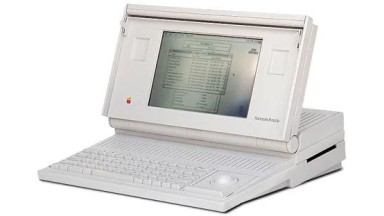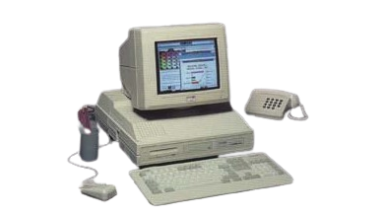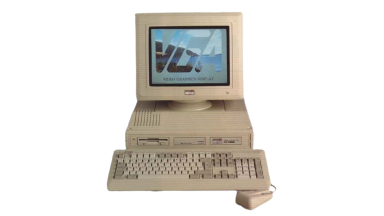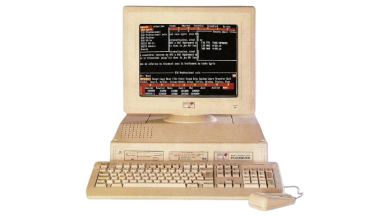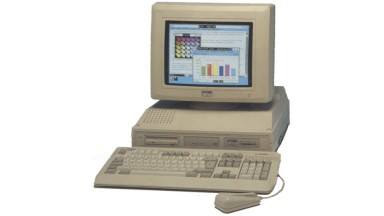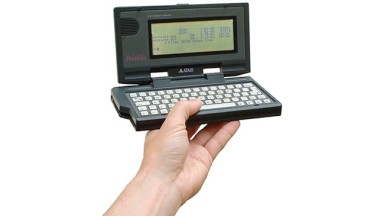
Atari STE
In late 1989, Atari Corporation released the 520STE and 1040STE, an improved version of the ST with improvements in multimedia hardware and the operating system.
Technical specifications of computer Atari STE
Manufactured by: Atari
Launched: 1989
CPU: Motorola 68000
Memory: 512 KB ~ 4 MB, in 4 banks, SIMM 30 pins
Support: Diskette 3½" DD
Hard drive:
None
Operating system: TOS 1.06
It features an expanded color palette of 4,096 colors from the ST's 512 (although the maximum displayable palette without programming tricks is still limited to 16 at the lowest resolution of 320 × 200, and even fewer at higher resolutions), genlock support, and a blitter coprocessor (stylized as "BLiTTER") that can quickly move large blocks of data (particularly graphics data) in RAM.
The STE is the first Atari with PCM audio; using a new chip, it added the ability to play 8-bit (signed) samples at 6258 Hz, 12,517 Hz, 25,033 Hz, and even 50,066 Hz, via direct memory access (DMA). Channels are organized as a mono track or a track of LRLRLRLR... bytes. RAM is now much easier to upgrade via SIMMs.
Two improved joystick ports have been added (two regular joysticks can be connected to each port with an adapter), with the new connectors located in more easily accessible locations on the side of the case. The improved joystick ports were reused on the Atari Jaguar console and are compatible.
Initially, the ST models suffered from software and hardware conflicts, rendering some applications and video games written for the ST line unstable or even completely unusable, primarily due to programming direct hardware calls that bypassed the operating system. Furthermore, even having a joystick connected sometimes caused strange behavior with some applications (such as the WYSIWYG word processor 1st Word Plus).
Sleepwalker was the only STE-exclusive game from a major publisher, but there were STe enhancements to games such as Another World, Zool, and The Chaos Engine, as well as exclusives from smaller companies.
The final STE machine, the Mega STE, was a STE in a gray Atari TT case that featured a 16 MHz switchable dual-bus design (16-bit external, 32-bit internal), an optional Motorola 68881 FPU, a built-in 1.44 MB 3.5-inch "HD" floppy disk drive, a VME expansion slot, a network port (very similar to the one used by Apple's LocalTalk), and an optional built-in 3.5-inch hard disk.
It also came with TOS 2.00 (better hard disk support, improved desktop interface, memory testing, 1.44 MB floppy disk support, bug fixes).
It was marketed as being more affordable than a TT but more powerful than a regular ST.

